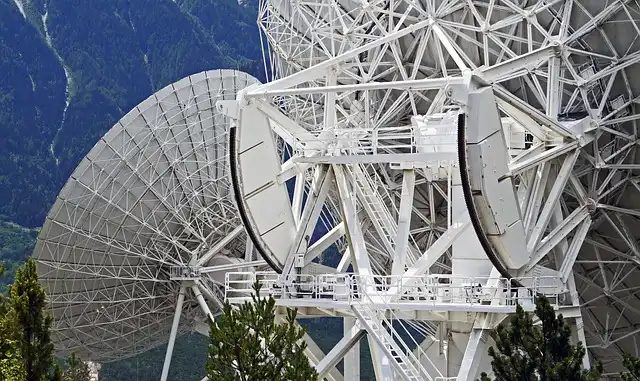
To name a few discussion factors, the regulator has actually looked for sights on particular airwave bands and band-ranges for allowance of satellite range to LEO, MEO and GEO satcom gamers operating repaired and mobile satellite services. Mobile satellite services would consist of voice, text, information, and internet services. Even more, it has actually welcomed recommendations on the maximum period of satellite spectrum allowance to satcom gamers.
Individually, Trai has sought sights on whether DoT’s December 2023 order need to be the criteria for determining spectrum prices on ‘a per MHz basis’ for dealt with satellite solutions provided by LEO/MEO constellation operators. At the same time, if satellite spectrum prices is to be computed as a percentage of a satcom gamer’s AGR, Trai has actually looked for sights on what would certainly be an appropriate percent. Better, it has actually examined “if a minimum range charge” have to be specified to fight inefficient satellite spectrum use.
This is considering that Trai has lately mooted a single authorisation for satellite telecoms and removal of an extant limitation on VSAT operators– to supply services just to a closed individual team (CUG)— and pushed for expanding the range of satellite solutions by recommending the combining of the key VSAT and International Mobile Personal Communications by Satellite (GMPCS) satcom allows.
Separately, Trai has looked for views on whether DoT’s December 2023 order must be the criteria for determining spectrum prices on ‘a per MHz basis’ for repaired satellite services used by LEO/MEO constellation drivers. At the same time, if satellite spectrum rates is to be computed as a percentage of a satcom gamer’s AGR, Trai has looked for sights on what would be a suitable portion. Better, it has actually examined “if a minimal spectrum charge” have to be defined to combat inefficient satellite range use.
“DoT has requested to take this right into factor to consider while providing recommendations to its existing referral on the subject,” Trai stated in its paper. It added that the department feels a concern develops if the issue of percentage of AGR, previously suggested by Trai for business VSAT solutions– which is a geostationary orbit or’ GSO ‘based taken care of satellite service requirements– to be re-examined.
In this context, the regulator has actually additionally doubted what must be a suitable security distance if airwaves assigned for satellite gateway links is likewise allocated to 5G drivers. “Should a requirement be consisted of in the terms and conditions of the job of range for satellite gateway web links to stay clear of any disturbance to/ from earthbound networks.”
Based on the Telecom Act, 2023, range for satellite solutions, consisting of for global mobile individual interaction by satellite solutions (GMPCS) permit-holders, must be given without public auctions. However the conditions for range use and the rate at which it’s to be allotted are yet to be specified.
Amongst various other conversation factors, the regulatory authority has actually sought sights on particular airwave bands and band-ranges for allocation of satellite spectrum to LEO, MEO and GEO satcom players running repaired and mobile satellite solutions. These rules, however, will certainly be specified just after Trai has sent its recommendations on rates of satellite spectrum and then terms and conditions of assigning such airwaves without public auctions.
Government authorities have actually previously said airwaves set aside administratively for satellite solutions is indicated only for point-to-point link and not for straight transmission of solutions to retail customers. The guidelines pertaining to the Telecommunications Act are expected to specify the exact conditions for satellite range use. These regulations, however, will certainly be specified only after Trai has actually sent its suggestions on prices of satellite spectrum and after that terms and conditions of alloting such airwaves without public auctions.
The telecommunications regulator has also batted for job of satellite spectrum to international satellite biggies “within a practical timeframe”, considered that reliable life of a satellite system differs from 5 to ten years for LEO satellites.
Trai, though, has underlined a crucial part of the Division of Telecommunication’s July 2024 recommendation on satellite spectrum rates, getting in touch with the regulatory authority to revisit an earlier referral of cutting spectrum usage charges (SUC) for VSAT-based satcom operators to 1% of AGR from 4% currently, and assess if this needs to be preserved or increased to guarantee a level-playing field between satellite broadband gamers and earthbound mainline telcos such as Reliance Jio, Bharti Airtel and Vodafone Concept (Vi).
The DoT, however, has actually warned that since in an AGR-based range billing device, range fees are not linked to the quantum of spectrum held, it can urge drivers to keep spectrum still rather than utilizing it efficiently. “One approach to resolve this problem of hoarding of range could be charge of a minimum spectrum cost for quantity of range held by a company,” DoT has actually recommended in its reference to Trai.
Trai also noted that spectrum for space-based communications services is currently being assigned via a management mechanism with formula-based charging for some services and percentage of AGR-based billing for others.
Trai has actually also looked for comments on whether additional rollout obligations require to be mandated as a pre-condition for satellite airwaves project to firms planning to supply mobile and set satellite solutions. These would be in enhancement to the rollout conditions recently recommended by the regulatory authority for satellite-based telecoms solutions authorisation.
The much waited for discussion paper from the Telecommunications Regulatory Authority of India (Trai) has actually sought pointers on whether such satellite range should be charged on a per MHz (or system) basis, as a percentage of a satellite player’s modified gross profits (AGR) or by means of a brand-new formula.
In its 87-page discussion paper, Trai has actually also sought sights on the need to suggest a defense distance or any other actions to avoid interference for satellite planet terminal portals of various satellite systems operating in the very same frequency array.
The Telecommunications Regulatory Authority of India (Trai) is seeking views on the rates and allotment of satellite range for business like Eutelsat OneWeb, Amazon’s Kuiper, and Starlink. The conversation paper addresses whether range ought to be billed per MHz or as a percentage of modified gross earnings (AGR), intending to ensure reasonable competitors with earthbound telecom companies.
1 Amazon Kuiper2 satellite broadband
3 satellite spectrum
4 Telecom Regulatory Authority
« Vodafone Idea seals Rs 13,500 crore equipment deal with NokiaDell launches AI for Telecom program to boost AI adoption »
